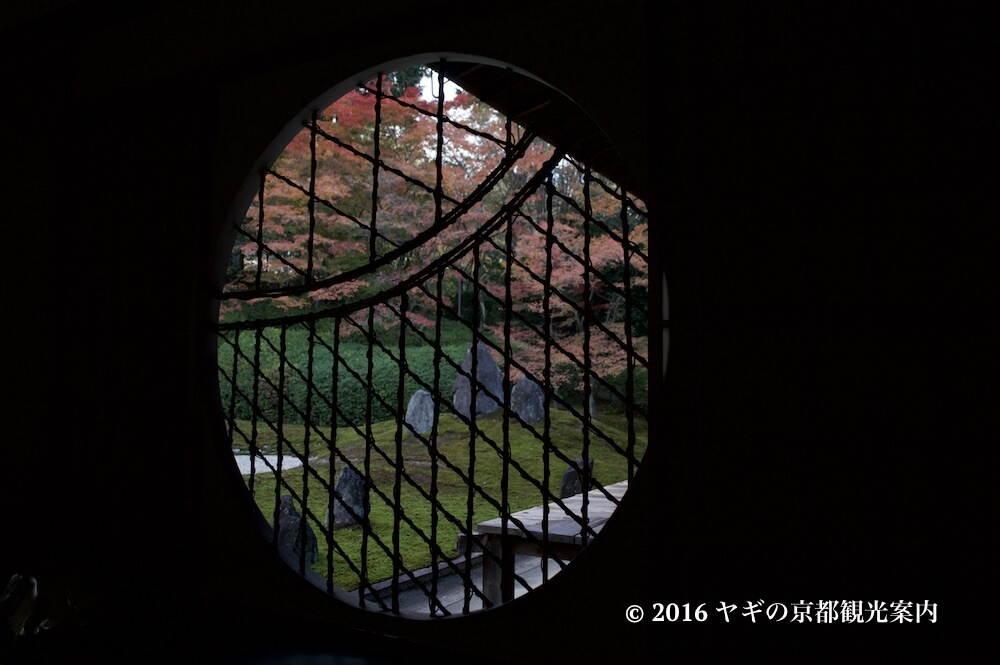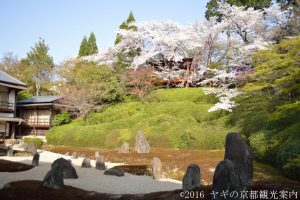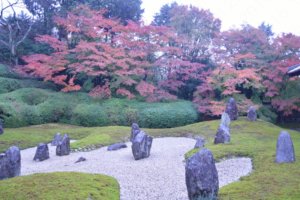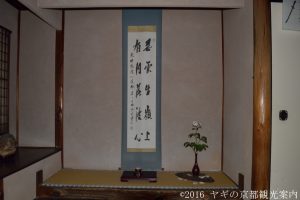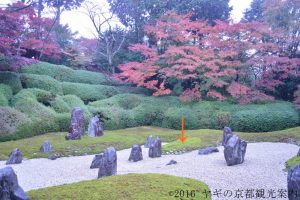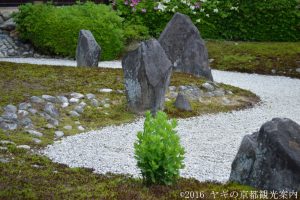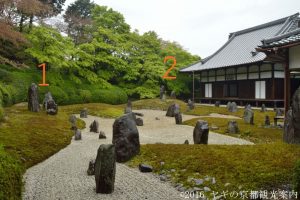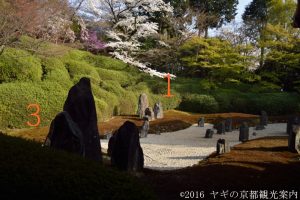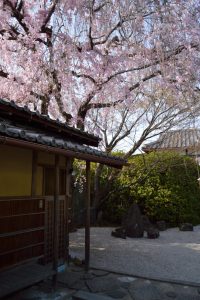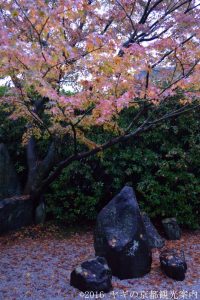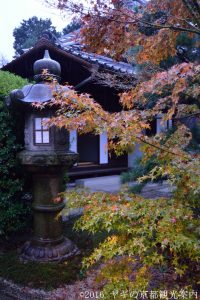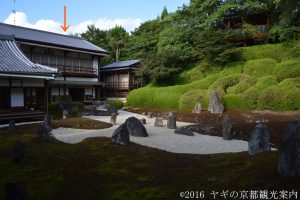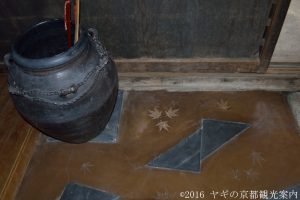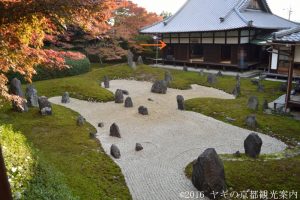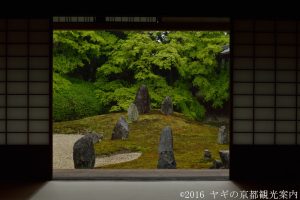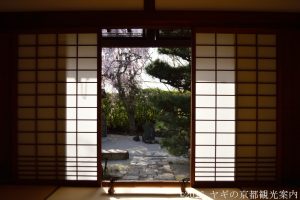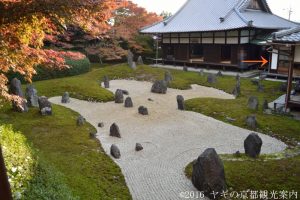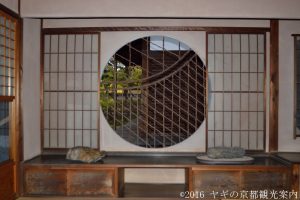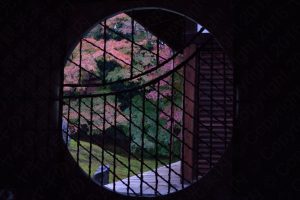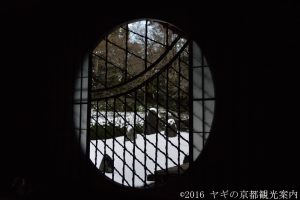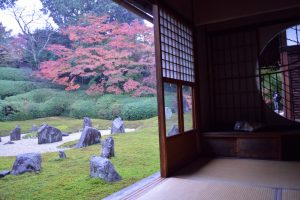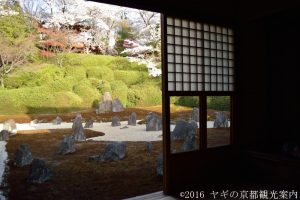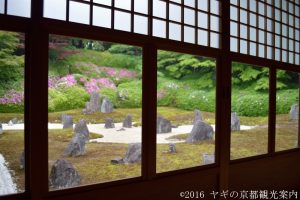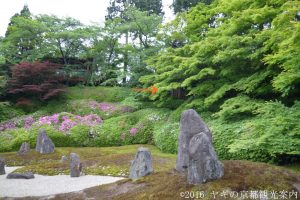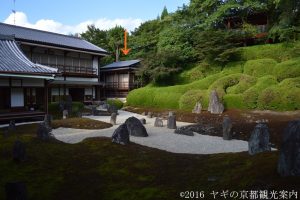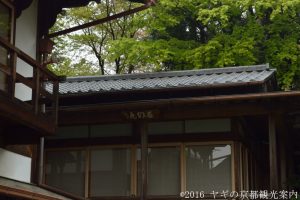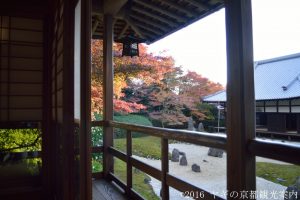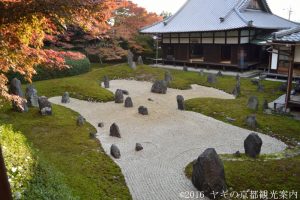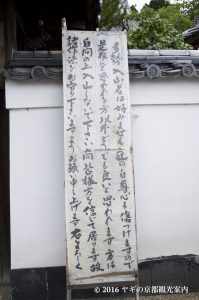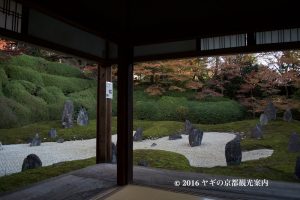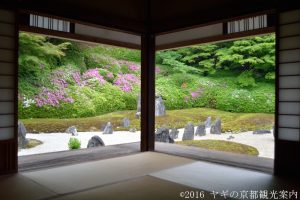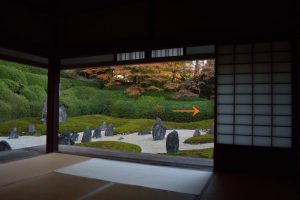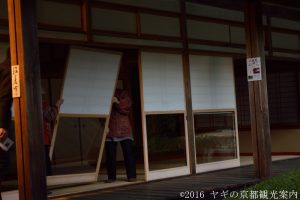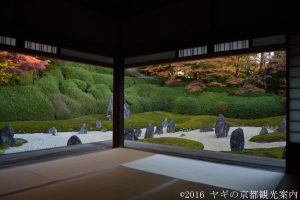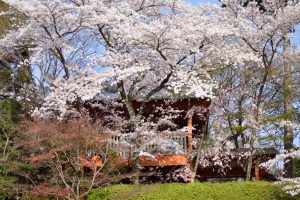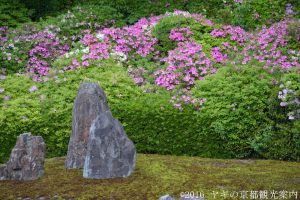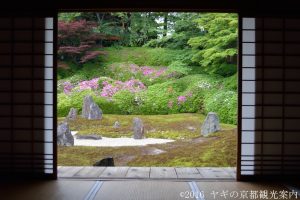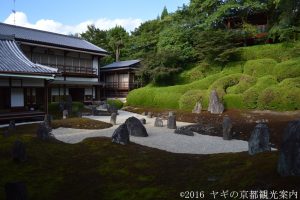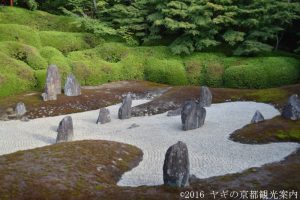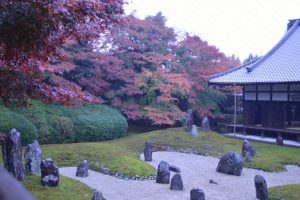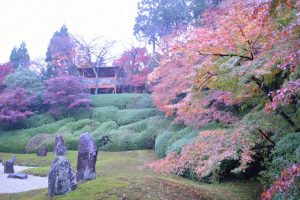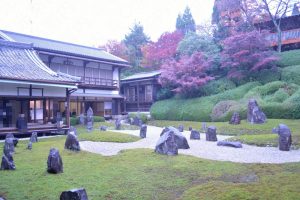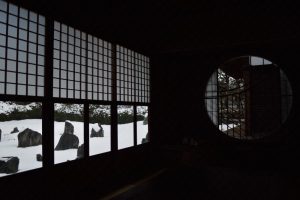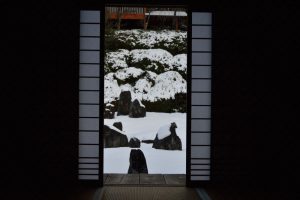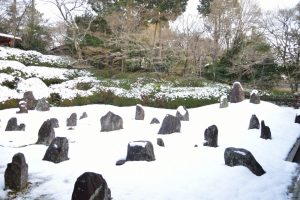What is Komyoin temple?
Komyoin temple is a tiny temple of Rinzai school. It is the best place to meditate in Zen garden though it has scarce visitors. Even Japanese tourists, except “Kyoto enthusiasts”, have little knowledge about it.

About Zen garden?
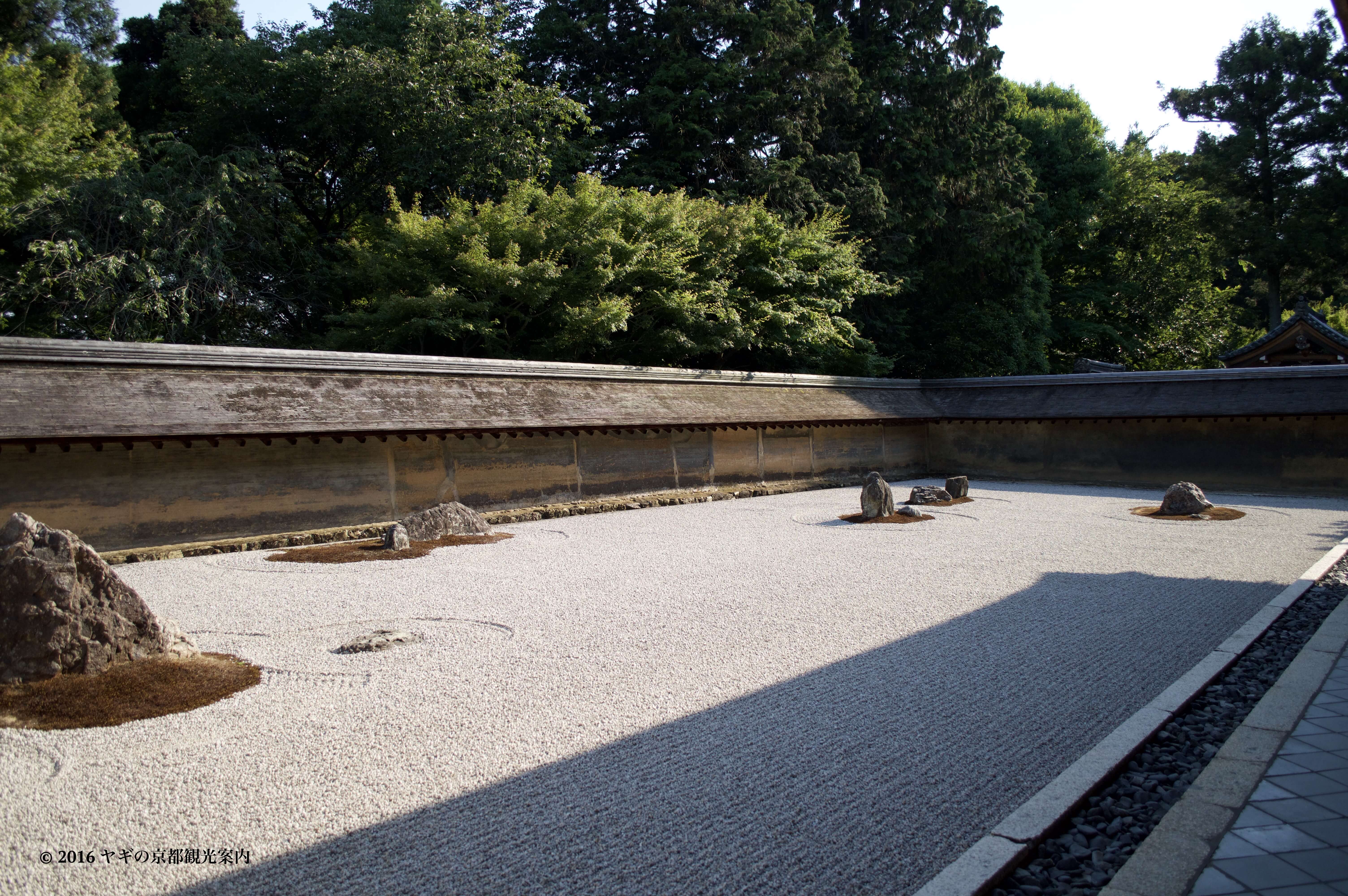
The short history of Komyoin temple and Mirei Shigemori
Compared to other temple like Kyomizu dera, Komyoin temple is rather new to Kyoto. It was built in 1391 by Kinzan Minsyo as a sub-temple of Tofukuji temple. The Zen rock garden was built in 1939 by a famous garden designer Mirei Shigemori. He is the most outstanding garden designer in the 20th century. “Hashin no niwa,” the Zen garden of Komyoin is one of his masterpieces. We have scarce information on the temple and its garden but I suppose the huge typhoon in 1934 devastated the original garden; It put many temples and gardens in Kyoto into debris.
1934 is a critical year not only for the gardens but for Mirei. Japanese garden always has no blue prints. Garden designers and temples were at a loss for reconstructing them. He made large inspection on 300 temples and gardens for 3 years to find the tradition of Japanese garden designing, especially that of rock garden, was on the verge of extinct. His through study of the art of gardening and the odyssey around the archipelago for a third of a decade made him a Zen garden master.
Hashin no niwa, or 波心の庭, the Zen rock garden of Komyoin
What’s the meaning of the garden?
The Zen rock garden of Komyoin is called “Hasini no niwa (波心庭).” It is named after a Zen riddle. Take a look at the Kanji letters on the hand scroll in the picture above. It reads “無雲生嶺上 有月落波心 (kumo no reijyo ni syozurukoto nakunba tukino hasin ni otsuru ari ).”
An apprentice asked a Zen master, “What is the Buddhism?”. He answered “If we have no clouds, we can see the moon on the surface (of water)”.
What did he mean? I’ll show you the answer later.
The best garden to meditate in Kyoto.
Let me explain the most important idea about the Zen Buddhism is “即今、当処、自己 (Sokkon, tohsyo, jiko).”
即今(sokkon) stands for “this moment, not yesterday, not tomorrow, not today.”
当処(tohsyo) stands for “here, or the place you are in.”
自己(jiko) stands for “myself.”
IDEST, the words mean “I live my life right here, right now.”
Zen garden is a place to exercise the idea. All we can do is to under stand the fact that “I live my life right here, right now”, not to meditate. Of course you can meditate if you would like to!
Let us be in the garden!
The construction of the Zen garden
The rock garden
Komyoin temple is known as “虹の苔寺(Niji no koke dera. Moss temple in rainbow.).” Mirei Shigemori is famous for his art of stones and moss. In Hasin no niwa, stones standing on a velvet-like moss showing off their physical strength. The ground covered with moss stands for “州浜 (suhama),” or beach with small inlets. Take a look at the place the arrow indicates. There are small stones. They indicate splash of sea water for which white pebbles stand.
The garden has 75 stones. There are three grouping of three stones (Indicated in the picture with numerals) and the left. Each grouping stands for “三尊(sanzon), the way we line up Buddhist statues. In sanzon, we put main statue in center and sub-statues in the both side of the main. In the garden, each grouping means “釈迦三尊 (Syaka sanzon : Buddha, Manjushri, and Samantabhadra),” “阿弥陀三尊 (Amida sanzon : Amitabha, Guanyin, and Mahasthamaprapta,” and “薬師三尊 (Bhaisajyaguru, Suryaprabha, and Candraprabha.” And in the end, theses three grouping stand for Amida sanzon. There are five buildings to admire the garden.
“If we have no clouds, we can see the moon on the surface (of water)”, what does it mean?
The answer is “If your mind is clear, you can find the Buddhism in the reflection of the moon on the surface of water.”
The approach
Behind the entrance gate, there is an approach to the entrance. We gain the expectations to the garden.
観庭楼 Kan tei roh
Kan tei roh means “A house to see garden.” It is the largest building around the garden. We can have Japanese tea (Not always).
The entrance belongs to Kan tei roh.
It has stunning corridors. Each of them are made of one piece of long board. I’ve never seen such long boards in any other places. About 26 feet.
方丈 Hojo
The most important building. There are statue of Buddha and alter.
書院 Shoin
Shoin is a study in Buddhist temple. In this shoin, we can enjoy view of the garden through “吉野窓 (Yoshino mado).” We enjoy views of the garden through Yoshino mado as though it was a flame of a picture.
The glasses are hand-crated. Their uneven surface make the garden blurred.
羅月庵
It is said there is a tea house to admire the moon on the east sky. It’s “Ragetsu an” but we can not find it. I suspect it is a house behind the maple trees.(indicated with the arrow)
両行庵 Ryo koh an
There is also a tea room. It is open to public in fall. We have a complete view of the garden.
Typical expression in Japanese language
Let us learn about Japanese language. There is a signboard at the entrance gate of Komyoin.
It literally reads; We don’t expect many visitors. If you don’t thirst for the garden, I’m afraid you better leave here because your entrance might hurt the pride of the garden. Before make your decision, ask yourself what you would like to. Behind this gate, behave yourself with decency. We believe in YOU. We thank you in advance.
It actually means; Behave yourself, or leave here right now. No rioters allowed.
Komyoin is a very solemn place. Only serious person has a permission to enter but if you said to visitor “Behave yourself, or leave here right now,” you would be a person with no decency. So, the writer warned visitor with gentle expressions.
It is a typical way in Japanese language; we don’t want to hurt others’ pride.
Japan and Nature
Let us learn about one more peculiar thing in Japan. Take a look at the picture. It was taken inside of Kan tei roh. You can see the garden inside of a house and there are no walls. It is a typical construction of Japanese residence.
Instead of walls, we have “障子 (syouji), a sliding door”. Shoji is put into ditches in floor and ceiling and we can pull it out easily. In the first picture, there is only one shoji but in the second picture, we can put many more shoji in the diches and these shoji work as a wall. This construction of house depends on our attitude toward Nature.
In Japanese language, Nature is translated “自然 (sizen)” but I suppose these words are quite different. The most different thing between two words is the way we treat it. For Japanese people, Nature is not an object at all. For example, we can say “We conquer Mt. Fuji.” There is nothing wrong with the sentence semantically but it sounds very strange to us because Nature is not an object to be conquered. For us Nature is not an object but a state; We are in Nature. This is the proper expression of our attitude. We are in Nature and Nature is close to us.
We detest to be separated from Nature and our attitude to it make large contribution to things indigenous to our country. 合掌
For seasons in Komyoin
Spring
Summer
Autumn
Winter
About Kohrin-in
Official name Enichi san Komyoin 慧日山光明院
Address 15-809, Honcho, Higashiyama Ward, Kyoto city, 605-0981
Phone no. 075-561-7317
Official Website : Not available.
Open hours: 8:00am – twilight
Entrance admission fee:300yen
Access to Komyoin
Get off at JR/Keihan Tofukuji station. It takes 10 minuites to Komyoin on foot.
ヤギの京都観光案内/KYOTO GOAT BLOGをもっと見る
購読すると最新の投稿がメールで送信されます。

